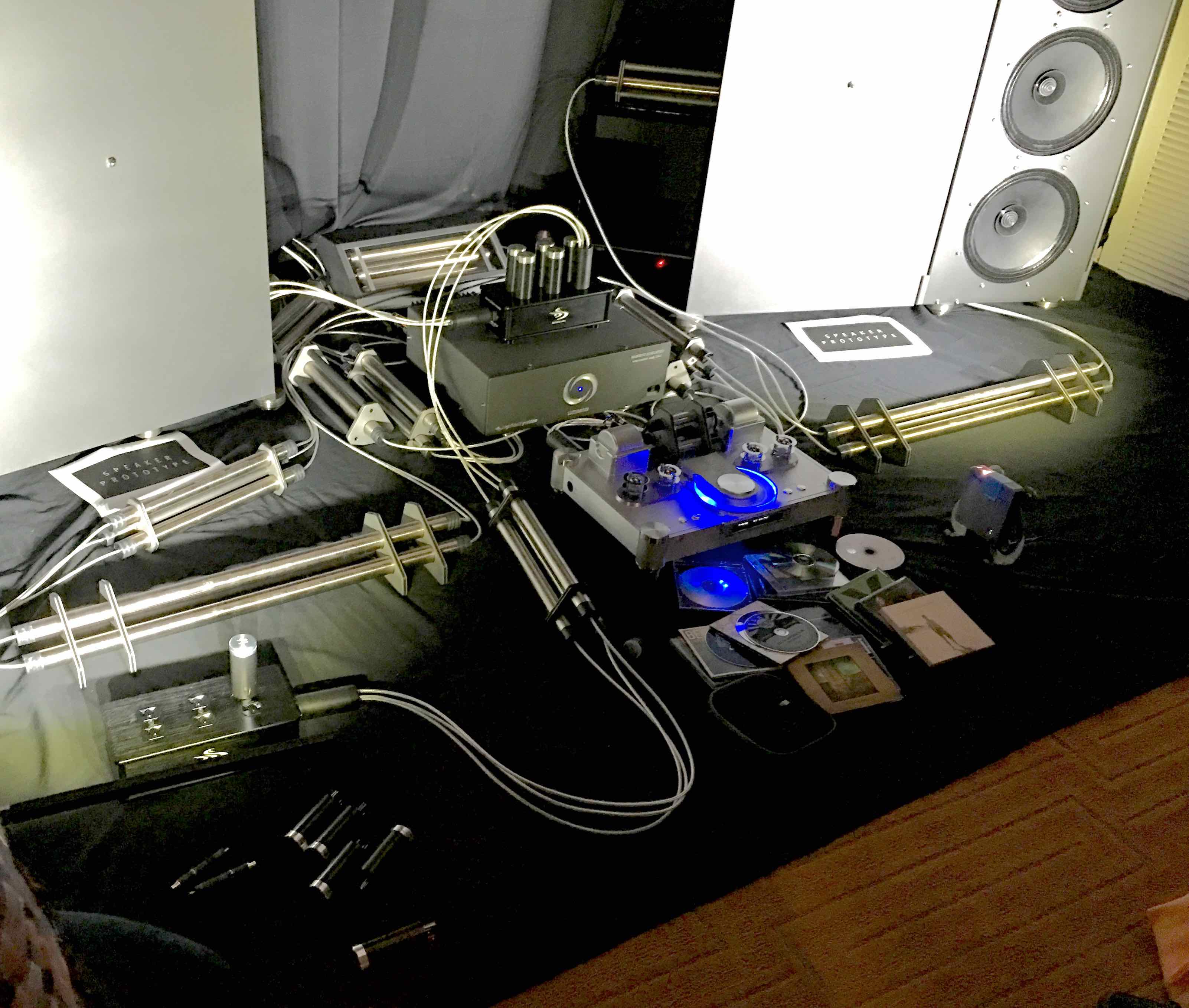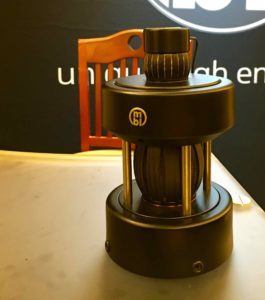New High-End Audio, Same Old Sound (Almost)
On Saturday I attended the The High End Audio Show in Anaheim, my first hi-fi show in probably a decade or more. Normally I don’t go to these things, but my friends at Wireworld Cable Technology (thanks Larry and David) were gracious enough to supply a ticket, so I braved the traffic (unusually bad for a Saturday) to see the latest in the world of high-end audio gear.
First let me say that the hi-fi world has changed in some ways and not in others since I last tasted it. One thing that was surprising was that the players had changed a lot, meaning most of the company names were new to me. The big thing that didn’t change was that most of them were pedaling way-overpriced gear that really didn’t sound that good.
Most of these were speakers, and many were in integrated packages complete with the amplifier and/or “controller head” where one couldn’t be used without the other. What I noticed was that most speaker manufacturers tended to concentrate on one part of the audio spectrum only. In other words, the speaker would have a lot of lows because that’s what they felt was important, or lots of highs, because high-end sparkle was their specialty. Very few had a good balance across the entire audio spectrum. Now considering that many speakers where powered by amps that were well in excess of several hundred watts (many above 1,000 watts) per channel, you’d think that they’d sound at least as good as the normal mid-priced powered speaker monitor used in the studio. That wasn’t the case though, as there were very few that I’d even consider to grace my control room, especially since the price was on average $10k and up.
Another thing that was interesting is that most company’s used a test audio source that varied between good old fashioned audio tape from a reel-to-reel tape machine, to a vinyl record played from a very hi-end turntable, to the streaming network TIDAL. I was very surprised that none used any of the 96/24 files that you can download from HDTracks, iTrax, or ProStudioMasters, which would have been the best choice in most cases.
 There were 2 very intriguing companies that I spotted at the show, however. One was a company out of Canada called highfidelitycables.com which made cables that were made out magnets and waveguides (pictured to the right) with no actual wire involved. They also had a prototype speaker systme there that was equally interesting in that it didn’t use wire between the speakers, had no crossover between the woofer and ribbon tweeter, and had an open back like a guitar amp. I have to say it actually sounded pretty good, but I’m not so sure about the “cables.”
There were 2 very intriguing companies that I spotted at the show, however. One was a company out of Canada called highfidelitycables.com which made cables that were made out magnets and waveguides (pictured to the right) with no actual wire involved. They also had a prototype speaker systme there that was equally interesting in that it didn’t use wire between the speakers, had no crossover between the woofer and ribbon tweeter, and had an open back like a guitar amp. I have to say it actually sounded pretty good, but I’m not so sure about the “cables.”

The unique MBL driver
The other was the high-end audio company MBL out of Germany, which had the only speaker system at the show that I’d ever consider using in the studio, since it was absolutely stunning – the closest thing to “being there” that I ever heard! The problem was that a pair of these baby’s will set you back $256,000, but I’d have to say that if you wanted to have the absolute finest audio reproduction, this would be it (although I don’t know how well they’d hold up under normal every day production pounding – the achilles heal of all hi-fi speaker systems) The company also has less expensive speakers that run only in the tens of thousands of dollars as well, but these weren’t on display.
The speakers are built around a very cool new driver that has a lot in common with normal old-fashioned speaker technology in that it’s built around a couple of voice coils that point upwards to energize some strips of paper-thin composite material (see the figure on the left). This means that the speakers are omnidirectional. Frankly, I would’ve placed them on the sides of the listening environment instead of in the front, but that might’ve been too outside for the attendees.
Speaking of the attendees, I was surprised that the turnout was so high. I was told it was around 6,000 and I believe it based on the fact that it was difficult to find a place to park. It also wasn’t composed mainly of older rich white guys, which is what I expected. Sure there were lots of them, but there were more 20-somethings and women than I would’ve ever imagined. It’s a good sign that more people are into audio quality, although they might not being getting their money’s worth thanks to the many $100k+ plus systems on display.
In the end, I’m glad I braved the traffic to attend the T.H.E. Show, but I think I’m good for another 10 years now.

